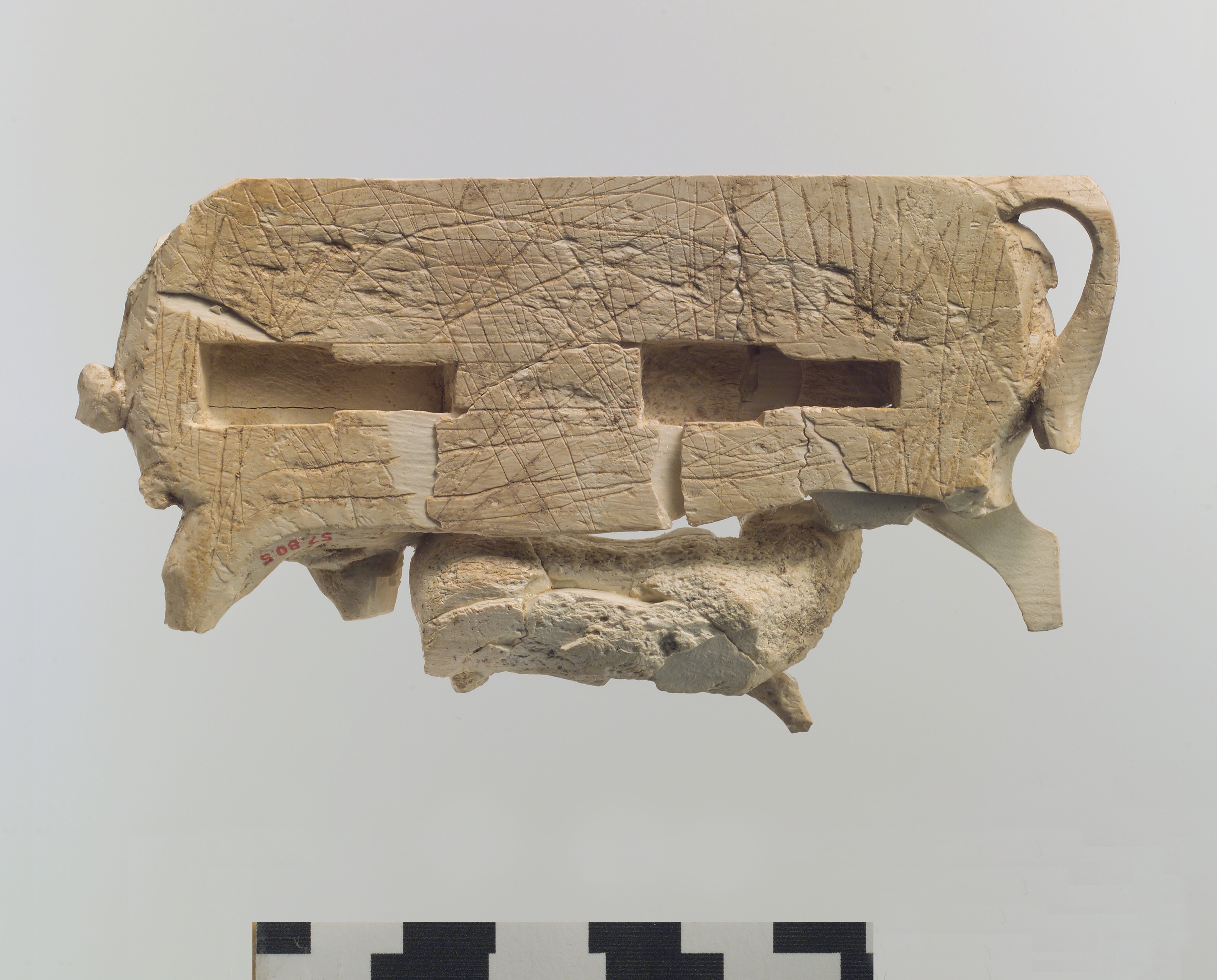Openwork furniture plaque showing a cow suckling a calf
Not on view
During the early first millennium B.C., ivory carving was one of the major luxury arts that flourished throughout the ancient Near East. Elephant tusks were carved into small decorative objects such as cosmetic boxes and plaques used to adorn wooden furniture. Gold foil, paint, and semiprecious stone and glass inlay embellishments enlivened these magnificent works of art. Based on certain stylistic, formal, and technical characteristics also visible in other media, scholars have distinguished several coherent style groups of ivory carving that belong to different regional traditions including Assyrian, Phoenician, North Syrian and South Syrian (the latter also known as Intermediate).
Several ivories in the Metropolitan Museum’s collection are from the Aramaean town of Arslan Tash, ancient Hadatu, in northern Syria just east of the Euphrates River, close to the modern Turkish border. French archaeological excavations at the site in 1928 revealed city walls and gates in addition to a palace and temple that were built when the Neo-Assyrian king Tiglath-Pileser III (744-721 B.C.) turned the town into a provincial capital and military outpost. During the excavations, over one hundred ivory furniture inlays that can be attributed to the South Syrian and Phoenician styles were found in a building near the palace. One piece bears a dedicatory inscription in Aramaic to King Hazael, mentioned in the Bible, who ruled Damascus during the second half of the 9th century (ca. 843-806 B.C.), suggesting that this collection of ivory furniture inlays could have been taken by the Assyrian state as tribute or booty from Damascus. The Arslan Tash ivories share an amalgamation of Egyptianizing motifs typical of the Phoenician style and forms characteristic of North Syrian art that may indicate a South Syrian or Damascene origin of this group. Today, these ivories are housed in museums in Paris, Aleppo, Jerusalem, Karlsruhe, and Hamburg, as well as The Metropolitan Museum of Art.
This fragmentary plaque depicts a cow suckling her calf and can be attributed to the South Syrian tradition of ivory carving. It combines the openwork technique, an aspect of the Phoenician style, with elements of North Syrian art, such as the cow’s large body. The cow turns her head, licking the tail of the calf. Her hair is detailed with incised lines and her large, curved horn rests against the upper body in low relief. The calf has rolls of baby fat on its throat and creases on its neck. A raised eyebrow accentuates its originally inlaid eye. The theme of a cow suckling a calf is commonly associated with fertility, and the circular composition of this plaque enhances this effect. Such an internal narrative is characteristic of Phoenician artistry. Two mortises cut into the roughened back of the plaque indicate that it may have been made to receive pegs for insertion into a piece of furniture. The absence of vertical frame elements suggests that this plaque was originally placed with similar pieces in a continuous frieze. Another openwork ivory plaque in the Metropolitan Museum’s collection with the same motif was found at the Neo-Assyrian capital of Nimrud (MMA 64.37.3).
Due to rights restrictions, this image cannot be enlarged, viewed at full screen, or downloaded.
This artwork is meant to be viewed from right to left. Scroll left to view more.



